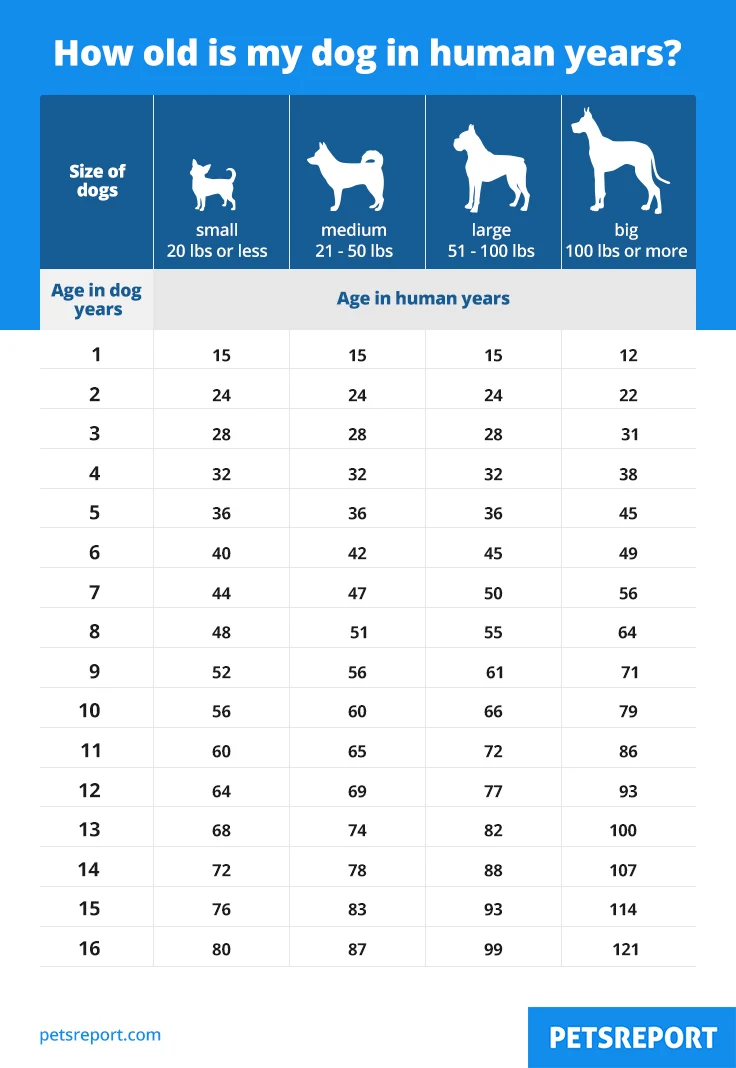For far too long, we’ve been led to believe that to determine how old a dog is, we must simply multiply their age by seven. But is this method still really accurate? While the “one dog year = seven human years” ratio has been around in our dated encyclopedias since the 1950s, modern science now dictates that determining your dog’s age is actually not that simple.
Where exactly did this erroneous ratio stem from? One known explanation is that the calculation has been based on the statistic that an average human’s life lasts about 70 years, and a dog’s life about ten years.
While we can never truly erase the widely-accepted yet seemingly fallacious information from our books, we can now rely on new and updated research to finally know the true and correct age of our beloved four-legged family members.
So, how old is your dog?
After thoroughly studying specific genetic differences between humans and dogs, scientists and researchers have officially debunked the long-standing 1:7 rule. As it turns out, our furry friends age at a rate much faster than previously believed! We now have a new formula that accurately converts a dog’s age into human years based on experts’ findings.
But before you bring out your calculators, keep in mind that what’s involved here is not simple math. Several variables must be considered when determining your wagger’s age, such as breed, size, sex, and weight.
Nevertheless, as a general rule, conversion of human to dog years goes like this:
How to determine your dog’s age:
- The first year of a medium-sized dog is equivalent to fifteen human years
- The second year of a dog’s life is equal to nine human years
- In the succeeding years following the second, every human year equals approximately four to five dog years, depending on certain variables.
Smaller dogs have longer lifespans than larger dogs
As mentioned, when pinning down a dog’s exact age, several factors come into play. A glance at the chart tells us that the larger and heavier the dog, the shorter its lifespan.
It’s widely known that smaller dogs generally live longer than larger breed dogs, but ironically, small dogs mature faster in one year. A large-breed puppy might age more slowly at first, but its aging process accelerates once it reaches middle age or at least five years old. Large dogs often reach seniority at age eight or nine, while small breeds or toy dogs don’t become “seniors” until eleven to twelve.
Other ways to determine your dog’s actual age
If you’re harboring some skepticism about the new dog age computation, another option is to bring your pet over to the vet. Your vet can give you a reasonable estimate of your furry pal’s age based on medical examinations, including tests that look at the density of bones, muscles, and the state of their internal organs.
If you want to know if your dog is reaching its senior years, look out for signs such as cataract build-up, loose skin, stiff legs and, a lightening coat that starts from their face then stretches to the body. On the other hand, if you’re bringing home a new puppy with no birth records, you can guess their age by examining the growth of their oral cavities.

So, is your dog much older than you thought?
We hope we’ve given you some enlightenment about the real age of your little mutt. If they’re a bit older than you initially thought, be sure to provide them with a lot more loving as they age up!
Knowing a dog’s true age should give fur parents the nudge they need to ponder on whether they’ve given their pals the best life possible. Dog parents have an essential role in improving their four-legged friend’s life quality and longevity. As long as you provide fido lots of exercise, a healthy diet, and a balanced lifestyle, you can enjoy more happy, loving years with your pup!



Leave A Comment